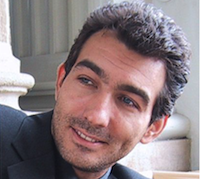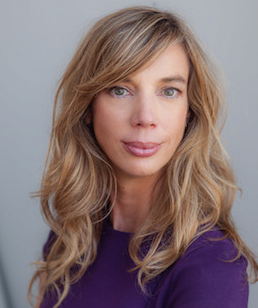Prof. Dickson D. Despommier/Emeritus Professor at Columbia University, engaged in the ‘Vertical Farming Project’
Reading Time: 4 minutes
In 2050 nearly 80% of the earth’s population will reside in urban centers. The human population will increase by 3 billion till then.To feed all those people 20% more land than is represented by Brazil will be needed, if we continue with traditional farming practises. We are using already 80% of the land that is suitable for raising crops. By deforesting we created room for our farms but this has also helped to create our biggest issue: Climate change.
How do we absorb all that carbon, that we have put into the atmosphere? The way we feed ourselves has been proven impractical for our planet. For maintaining traditional agriculture we use herbicides, pesticides, fertilizers, 20% of US fossil fuel uses and 70% of the available fresh water on the planet.
We have to rethink our behavior.
What exactly is vertical farming?
Prof. Dickson D. Despommier: Vertical Farming is an outgrowth of an older technology for growing food indoors. It arises out of the greenhouse industry – if you imagine a greenhouse being one story then a two story greenhouse would be vertical farming – It´s very simple.
Cities as Agricultural Centers?
Prof. Dickson D. Despommier: The Vision that I have includes the demise of vertical farming as regards to climate change. It is climate change issues that are effecting the way we grow our food. As we all know there are some very severe effects of a rise in temperature in our atmosphere in regards to where you can grow food. It upset the entire hydrological cycle as well. If your project the changes we see today into the not too distant future, things will only get worse. If we can´t reverse the trends in terms of atmospheric warming, sooner or later we will be forced to grow our food indoors, because the outdoors will not be suitable to grow food any longer. If we don´t wait for those changes to affect our lives but start now to think about how we will provide our food, we probably not only can change the way we feed ourselves, but also repair damages done in the past. We could allow the outdoor abandoned farms (which would occur eventually if we don´t need them any longer) to return to hard wood forests. Thus we can help to restore what was destroyed by deforesting and hereby aid to soften the effects of climate change.
Can we grow any kind of food inside?
Prof. Dickson D. Despommier: There are no limits because any plant on earth can be grown indoors, But you can´t grow all of them commercially yet. Vegetables, herbs and salad are very easy to grow as well as root vegetables like carrots, for example.
The growth of grains like wheat, rice and corn is more difficult, because they usually require large amounts of land. There are examples for growing rice indoors already. We just have to start to think from a whole new point of view, because we can never imitate the outdoor situation, but that´s not necessary anyway. I´ve been very encouraged by the development I’ve seen over the last two years.
What are the benefits of indoor farming?
Prof. Dickson D. Despommier: In traditional farming there is very little control of the outcome of the harvest. Many factors like the right amount of rain, sunshine or temperature in general are left to pure chance. If you turn indoors you imitate the requirements that are necessary with technology. By this you can completely deduct the insecure parameters as you are in absolute control. Weather or seasons are not an issue any more. That means that the whole farming process is much more productive as it can be planned thoroughly and nothing is left to chance any longer. As long as you can control technology, there is not limits to what you can do.
What is your vision?
Prof. Dickson D. Despommier: My vision goes beyond vertical farming because I don´t think that vertical farming alone would solve the problems of long term sustainability in an urban environment.
What we are looking for today is the technological equivalent to ecosystem behavior.
That requires an explanation: I´m a biologist by training, the last 15 years of my life I´ve been teaching ecological sciences and practising what I preach by talking about how cities should convert to sustainable systems, which are mutually linked.
One example is water: Every life form on earth needs water. We came to take water for granted – we use it a lot and then we discard it. We created huge reservoir systems, pipelines underground and all kinds of schemes to bring enough water to the growing populations in cities at the expense of the natural environment. That has huge effects on how the earth behaves. As a result that concerns our lives as well. Even if we can provide ourselves with enough water – we are taking it away from something else. And if you do that, that something else is going to get out of balance.
So my suggestion is, that cities start to behave like ecosystems.
The first step that an ecosystem produces for itself is wildlife. The sun shines on the earth and the earth produces plants. The plants are the food base for the animals. Those are the basic tiers of life. We can imitate those tiers of life in the cities, if we were to grow our plants. I would like cities to become integrated with the natural environment by imitating all the recycle mechanisms that nature has.
My vision is that cities biomimic a functional ecosystem.
About:
Dr. Dickson Despommier, PhD, is a microbiologist, an ecologist, and emeritus professor of Public and Environmental Health at the Columbia University. For 27 years he conducted research on cellular and molecular parasitism and held lectures and courses on Parasitic Disease, Medical Ecology and Ecology. From one of these courses, in 1999, he founded the root for this idea of raising crops in tall buildings; vertical farming. In 2010, he published his widely received book: “The Vertical Farm: feeding the world in the 21st Century”, St. Martin’s Press, New York. Two years ago vertical farms were regarded as a utopia, but one year ago the first prototypes were built. Among those prototypes are a three-story VF Suwon, South Korea, over 50 (plant factories that qualify as vertical farms) in Japan, a commercial vertical farm in Singapore that opened in 2012, and another in Chicago that was built in an old industrial building. Vertical farms have many advantages: food is organically farmed, urban space is saved, it is possible to farm all year round and in any place, and use of agrochemicals is eliminated. His idea was regarded as visionary several years ago, but today it has become a beacon for all countries where food imports are high.






